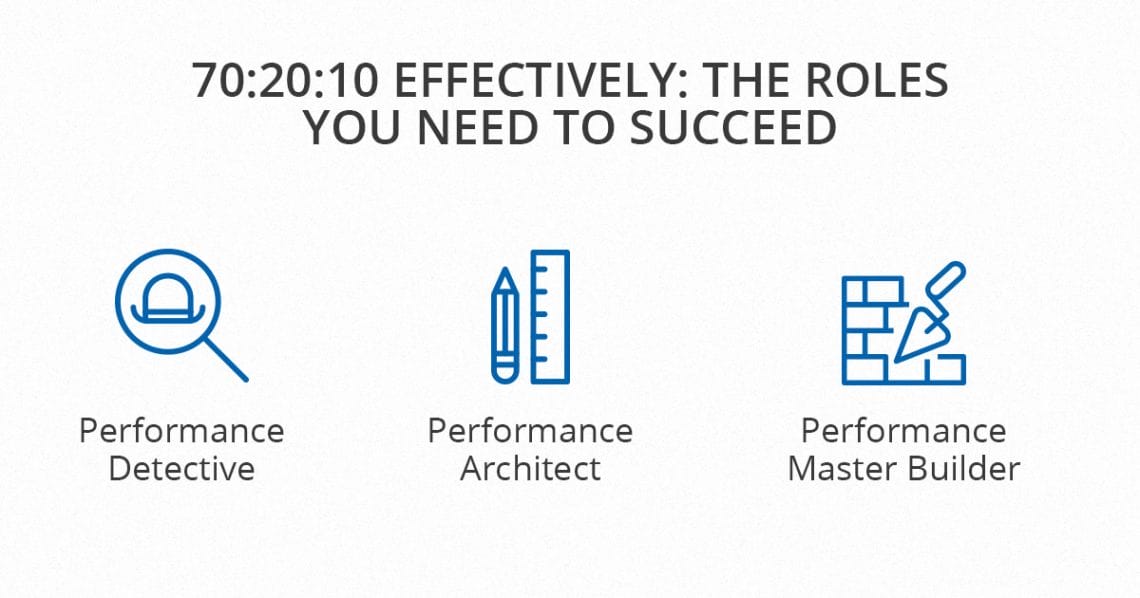
The difference between detective, architect and builder decides an L&D strategy’s fate
Current roles in most L&D functions are primarily educational and focused on designing, developing and delivering formal learning or development solutions (the ‘10’ in the 70:20:10 framework).
To deliver effective 70:20:10 outputs, L&D teams will be required to take on totally new sets of processes, roles, and tasks. These changes are essential to effectively use 70:20:10 principles and support business performance.
The overview of the new roles described here demonstrates how 70:20:10 has the potential to make L&D professionals and their L&D departments more effective in preparing for the future in alignment with business strategy.
Understanding 70:20:10 roles
In our recently released paper, we focus on the first three roles of our 70:20:10 framework; the Performance Detective, the Performance Architect, and the Performance Master Builder. Here’s what they are all about:

- Detective: The Performance Detective role analyzes performance problems in a systematic way. This involves carrying out business, performance and influence analysis whose outcomes provide the input for the Performance Architect.
- Architect: It is important for the Performance Architect not to fall into the trap of designing and developing the 10 or 20 parts first and then the whole. If an architect begins by designing the bathroom and the rest of the house later, then the final structure is likely to be less optimal than if the design is developed holistically.
- Master Builder: The Performance Master Builder role uses the critical tasks identified by the Performance Detective as a starting point. The Master Builder then co-creates effective solutions based on the Performance Architect’s design.
Designing the 70 with a mindset focused on resources rather than courses, and with access rather than the need to memorize, results in extending learning services well beyond the 10. Download our white paper on designing learning to get the full picture.
Get the White Paper, Designing Learning that Works: Using 70:20:10 Effectively, and begin your journey to implementing a learning strategy that works.
